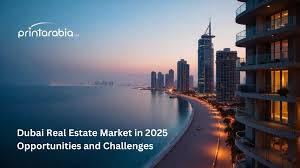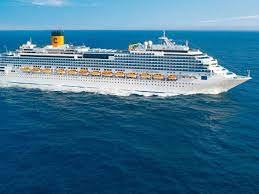Now Reading: Dubai’s Real Estate Boom: Opportunities and Challenges in 2025
-
01
Dubai’s Real Estate Boom: Opportunities and Challenges in 2025
Dubai’s Real Estate Boom: Opportunities and Challenges in 2025

Table of Contents
Dubai’s real estate market in 2025 is a global focal point, continuing its remarkable boom with record-breaking transaction volumes and robust economic fundamentals. In 2024, the emirate recorded 180,987 transactions valued at AED 441.5 billion, a 36.5% year-on-year increase, driven by strong demand from expatriates, high-net-worth individuals (HNWIs), and institutional investors. Despite a forecasted 15% price correction in late 2025–2026 due to a supply surge, Dubai’s 6.2% GDP growth projection, zero-tax environment, and strategic initiatives like the Dubai 2040 Urban Master Plan ensure long-term resilience. This analysis explores the opportunities and challenges for investors in Dubai’s 2025 real estate market, with insights from sustainable developments in Sharjah as a comparative model, and provides actionable strategies to capitalize on the boom.
1. Opportunities in Dubai’s Real Estate Market (2025)

Dubai’s market offers diverse investment prospects across residential, commercial, and sustainable segments, fueled by economic diversification, tourism growth, and investor-friendly policies.
Residential Sector
- Market Performance: Residential prices rose 20% in 2024 to AED 1,597 per square foot, with villas outperforming apartments (25% vs. 15% growth). Off-plan sales hit AED 53.9 billion in Q1 2025, reflecting strong investor confidence.
- Key Areas:
- Affordable/Mid-Market: Jumeirah Village Circle (JVC, AED 896/sq.ft., +7.25%), Dubai South, Al Furjan, International City (+15.5%).
- Luxury: Palm Jumeirah, Downtown Dubai, Emirates Hills, with 948 transactions above AED 15 million in 2024.
- Investment Opportunities:
- Affordable Housing: Apartments (AED 500,000–1.4 million) and townhouses (AED 1–2 million) in JVC and Dubai South offer 7–9% rental yields and 5–8% appreciation, driven by 5% population growth (3.8M to 4M in 2025).
- Off-Plan Properties: Projects like Emaar South, The Valley, and DAMAC Riverside provide 8–10% appreciation by completion (2026–2027), with flexible payment plans (5–10% down payment).
- Luxury Villas: Demand for branded residences (e.g., DAMAC Bay 1 by Cavalli) remains high, yielding 5–7% with 8–10% appreciation, targeting HNWIs.
- Why Invest?: Expatriate inflows, zero capital gains tax, and Golden Visa eligibility (AED 2M+) enhance appeal, especially in mid-market and luxury segments.
Commercial Sector

- Market Performance: Prime office rents rose 17% in 2024, with 12% growth projected for 2025. Retail expenditure is expected to grow 6% (2025–2027), driven by 18.7 million tourists in 2024.
- Key Areas:
- Offices: Business Bay, Dubai International Financial Centre (DIFC).
- Retail/Warehousing: Dubai South (logistics hub), community retail hubs.
- Investment Opportunities:
- Office Spaces: Yield 5–7% with 5–8% appreciation, supported by multinational relocations and Dubai’s business hub status.
- Retail/Warehousing: Yield 6–8%, fueled by e-commerce and tourism growth, with Dubai South’s logistics focus aligning with global supply chain demands.
- Why Invest?: Commercial properties offer stability amid residential supply pressures, with long-term leases ensuring consistent returns.
Sustainable Developments
- Trends: Sustainable properties account for 35% of 2025 transactions, up from 15% in 2020, aligning with Dubai’s Net-Zero 2050 goal and Al Sa’fat Green Building System.
- Key Projects:
- Emaar The Oasis: High-end villas with solar integration, greywater recycling, and smart irrigation, starting at AED 2 million.
- DAMAC Lagoons: Waterfront villas with energy-efficient designs, from AED 1.5 million, offering 6–8% yields.
- The Sustainable City: Solar-powered homes with 30–40% utility savings, mirroring Sharjah Sustainable City’s model.
- Investment Opportunities:
- Yield 6–8% with 8–10% appreciation, driven by eco-conscious demand and lower operating costs (20% utility reductions).
- Flexible financing (e.g., 25/75 plans) and Golden Visa eligibility enhance accessibility.
- Why Invest?: Sustainability hedges against market corrections, as seen in Sharjah’s Sharjah Sustainable City (100% solar, 6–8% yields), boosting tenant and resale appeal.
Comparison to Sharjah
- Sharjah’s Sustainable Model: Projects like Sharjah Sustainable City (AED 1.39M–3.49M villas, 6–8% yields) and Aljada (AED 639K apartments, 6–8% yields) offer affordability and eco-focus, with less supply risk (AED 40B transactions vs. Dubai’s AED 441.5B). Sharjah’s 8–15% appreciation complements Dubai’s 5–10%.
- Advantages: Lower entry costs (AED 639K vs. AED 1M in Dubai) and stable demand from families, but limited freehold zones reduce scalability compared to Dubai’s broad freehold areas (e.g., JVC, Palm Jumeirah).
WATCH MORE: https://www.youtube.com/watch?v=pu0LWYuVjPY
READ MORE: Dubai Real Estate 2025: Navigating the Predicted 15% Price Correction






















